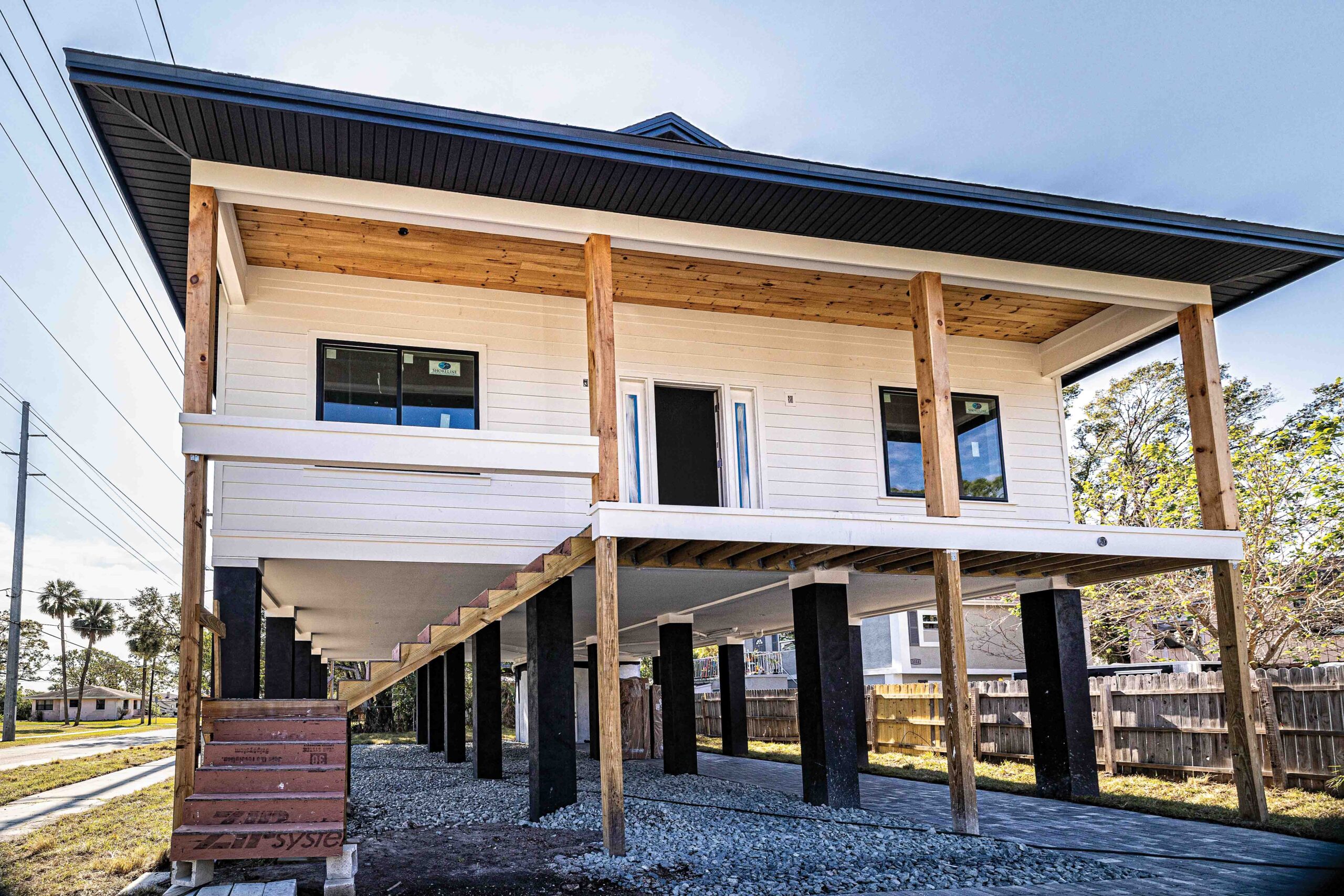Many of us know firsthand what our beautiful region and homes can—and, in some cases, simply cannot—withstand. In the wake of historic hurricanes Helen and Milton, many Tampa Bay homeowners are left evaluating the storm-worthiness of their current homes and facing tough decisions about repairing, rebuilding or elevating their properties.
“We haven’t faced a storm like this in a generation, if not longer,” says JC Hudgison, Chief Building Official for the City of Tampa.
After the storms, the city implemented initiatives to assist residents whose homes suffered storm-related damage, including waiving permit fees, which remains in effect.
In December, substantial damage letters were sent to homeowners in flood hazard areas regarding the FEMA 50% Rule. This rule mandates that if repair costs exceed half a home’s value, the property must meet current codes, often requiring elevation or a complete rebuild.
So, what does the future of building and rebuilding in Tampa Bay look like right now?
For starters, if you’re still waiting on FEMA or insurance, know you’re not alone.
“Every single mortgage, every single home was set up individually. Some people are getting FEMA money, some people are getting insurance money, some people are getting no money,” says John Lum, a real estate developer in South Tampa and past president of the Tampa Bay Builders Association.
While some homeowners in heavily affected areas like St. Pete’s Shore Acres have chosen to raise their homes on stilts, the cost of elevation averages around $250,000, according to Lum.
“I don’t think that’s going to be the way people solve this problem. It’s going to have to be people just tearing homes down and building new,” he says.
Life in the Flood Zone
Homes in Special Flood Hazard Areas—including zones A, AE, V and VE—are considered high-risk for flooding and must comply with strict code requirements. In VE zones specifically, homes must be elevated on pile, post, pier or column foundations. According to developer Theo Camene of Ktiria Group, which operates on the Gulf Coast, Ohio and North Carolina, homeowners can expect to pay between $250 and $300 per square foot to elevate a “moderate” home to meet these standards.
“Building in VE zones is the most costly —not just for building, but also for insurance and all-around,” Camene says.
If you’re considering building in a flood zone, it’s crucial to work with a builder or developer experienced in constructing homes suited for these areas.
“There are only very few builders or developers who can build coastal homes because there’s so much involved, especially in the structural part of the house,” warns Camene.

Rising Above: Design for Elevated Homes
Homeowners have become wiser after the hurricanes to the importance of an elevated home in flood zones.
“Before the hurricanes, we had homeowners questioning whether the FEMA rules with building up higher were appropriate because it meant extra steps (up to the home),” says Ryan Doughtery, vice president of sales and marketing for luxury custom home builder Bayfair Custom Homes.
“Not everybody wants extra steps in front of their house. But now people are not only welcoming it, but they are having a conversation as to do they go even higher than what’s required,” he says.
Once you decide to build up, the right design and landscaping elements can help soften the appearance of blank walls on an elevated home.
“Sometimes it’s just a matter of fenestration, whether it’s siding or putting on windows. Nice, upgraded garage doors go a long way in helping the aesthetics, as does a more luxurious stair going up to the front door,” says Dougherty.
The best home builders plan a home’s exterior with landscaping in mind, ensuring it won’t interfere with a walkway or driveway.
Building Tampa’s Tomorrow
According to John Lum, the future of Tampa’s housing landscape will mirror the trends we’re already seeing today.
“I think the continued trend is just going to be exactly what’s going on now. These old homes in the path of hurricanes are going to get torn down. And new, beautiful, shiny homes, up to current codes and standards, are all going to be built. And they’ll replace those homes,” he says.
“Tampa still is one of the most desirable places in the country to move to, and people are still coming here in droves.”
FEMA Flood Zones
FEMA creates flood zone maps to highlight areas with a 1% annual chance of flooding. These areas, called Special Flood Hazard Areas (SFHAs), are important because they guide building rules for flood-prone regions and determine whether homeowners need flood insurance.
Properties in high-risk flood zones, labeled with an “A” or “V,” must have flood insurance if the mortgage is federally-backed or regulated. In these areas, there’s a 1 in 4 chance of flooding over the course of a 30-year mortgage.
- AE Zones: Areas likely to flood during a 1% annual chance flood, mapped with detailed studies.
- VE Zones: Coastal areas at risk of a 1% annual chance flood, with significant storm-induced wave action.
Here are more ways to be Hurricane Ready. Or if you’re looking to advertise with us, click here.



